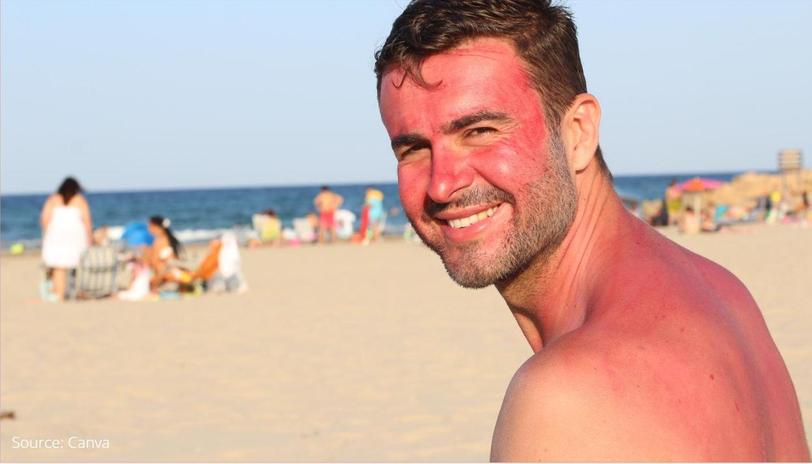UV rays are extremely important in life such as synthesis of vitamin D, anti-rickets, cure some skin diseases … However, UV radiation and other radiation in sunlight also. It is very dangerous when people are outdoors for a long time, especially when the UV index is high. This can cause skin conditions such as tanning, skin aging, sunburns, skin cancer, or eye diseases.


1. UVA and UVB rays


✅ According to CNN, UV rays are divided into 3 types: A, B, C. In which the radiation has a wavelength from 315-380nm of type A, the radiation has a wavelength of 280-315nm of type B, the wavelength of 100- 280nm is Class C radiation.
- Ultraviolet A (UVA): Occupies 90% of sunlight, has the ability to penetrate glass, car windows, windows. UVA rays cause skin aging.
- Ultraviolet B (UVB): It cannot penetrate car windows or other glass. UVB rays cause sunburn, redness, burning, pain, itching, edema, and possibly fever and are a major cause of skin cancer.
- The most dangerous is UVC rays can cause skin cancer, fortunately, the ozone layer blocks most UVC before they reach the ground.
2. The effect of UV light on health


✅ Ultraviolet light in moderate doses on the skin enhances the metabolism of vitamin D, necessary for the absorption of calcium, is a good nutrient for bones, very important for the development of height in children. To get these effects, you should expose your skin under the sunlight as soon as possible, the golden period is 6-7 am and 6-7 pm in the summer. Winter can be from 7.am to 8.am and 4.pm-6.pm in the afternoon.
👨⚕️While there are many benefits to the body, ultraviolet rays also have certain harmful effects, especially on the skin and eyes:
- UV rays also cause many other harmful effects on the skin, such as sunburn, skin aging, skin cancer and accelerate the aging process of the skin.


- You will have some visual disturbances such as temporary vision loss, watery eyes, photosensitivity after a few hours of UV exposure. Typically, vision-related symptoms resolve on their own after about 8 hours. If the eye is exposed to ultraviolet rays many times over a long period of time, the risk can lead to more serious eye conditions, such as retinal failure, cataracts, even blindness.
3. Tips to protect skin from UV rays
- Limit sun exposure between 10:00 am and 4:00 pm as this is the time when the sun is most intense. Always keep children under 6 months old in the shade or protected from direct sunlight.
- Pay attention to UV index: Shows the harmful level of UV exposure at any particular time of day. The UV index is usually measured by the weather forecast center and informed to the whole population. When this index reaches 10 or more, meaning that the radiation level is very large, should be avoided outdoors.
- Wear protective clothing, including sun protection shirts, such as long sleeves, collars, long, dark pants, and a wide-brimmed hat to cover your face, neck, and ears. If possible, choose a special sunscreen fabric.
- Wear eye protection: Opt for lenses with sun protection, UV absorption from 99 – 100% that will best protect the eyes and surrounding skin.


- Supplement fresh fruits rich in vitamin C, help limit the harmful effects of ultraviolet rays.
- Use sunscreen regularly every time you go out, even when it’s cloudy. Ultraviolet rays can penetrate clouds and through glass doors.
4. Notes on using sunscreen


- Choose a broad-spectrum sunscreen that protects against both UVA and UVB rays. Products with water resistance and sun protection factor (SPF) of 30 or higher should be selected.
- Use lip balm or lipstick containing sunscreen with an SPF of at least 30.
- Apply a sufficient amount of sunscreen 15 to 30 minutes before going outside.
- Reapply the whole body every 2 hours outdoors. If you are going to the beach, swimming in a lake or sweating a lot, reapply the cream every 1 hour of use.






Leave a Reply